T4 and T3 are important hormones produced by the thyroid gland.
Unfortunately, several thyroid conditions can cause abnormal levels in the blood.
This article will explain the actions of T4 and T3 and how to interpret test results.
What Are T4 and T3?
The thyroid hormones Thyroxine (T4) and Triiodothyronine (T3) are produced and secreted by the thyroid gland.
Each molecule of T4 and T3 is made up of a protein and iodine (in the form of iodide). T4 contains 4 molecules of iodide and T3 contains 3 molecules of iodide – hence the names T4 and T3.
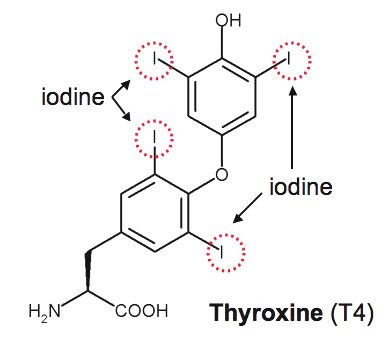
This is what T4 (Thyroxine) looks like. It’s bound to 4 iodine molecules, while T3 is bound to 3.
Interestingly, thyroid hormones are the only compounds in the body that contain iodine. This is why dietary intake of iodine is important for thyroid health.
T4 is produced by the thyroid gland in much greater amounts than T3, around 90% more. This is because when T4 reaches organs and body tissue, it’s converted into T3.
So T4 is basically a stepping stone required for T3.
T3 is the active form of thyroid hormone in that it influences many body processes, in particular the regulation of metabolism (1, 2).
Summary: T4 and T3 are hormones produced by the thyroid gland and are essential for life. The thyroid produces mainly T4, which is then converted to T3 in tissue and organs. T3 is the active hormone.
What Regulates T4 and T3 Levels
T4 and T3 levels are regulated by thyroid stimulating hormone (TSH) – you can read the full guide on TSH here.
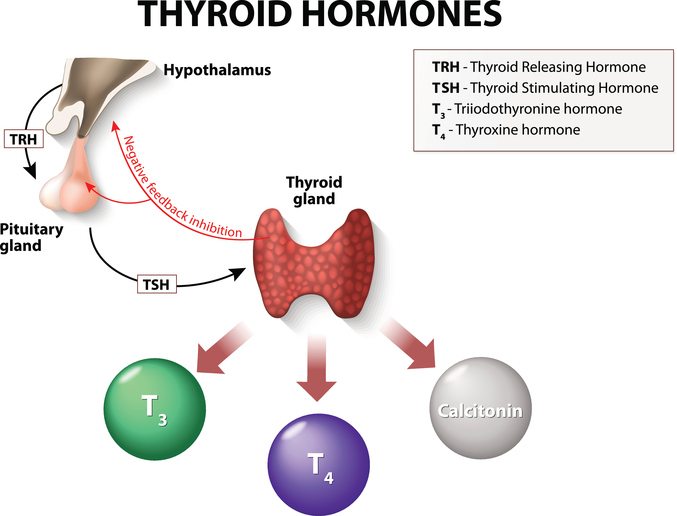
When TSH is released it stimulates the production of T4. In turn, T4 levels in the blood dictate the amount of TSH secreted.
- Low circulating T4 causes an increase in TSH levels. This increases the amount of T4 released into circulation.
- High circulating T4 causes a decrease in TSH levels. This decreases the amount of T4 released into circulation.
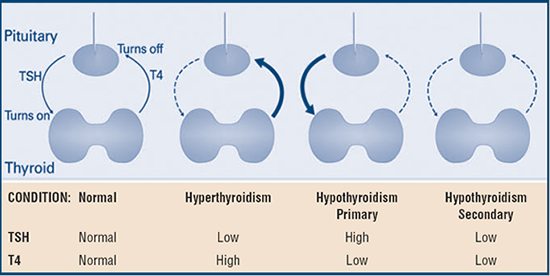
The relationship between T4 and TSH levels. Image source: Thyroid.org
However, note that many other factors can disrupt thyroid hormone levels. These include (3):
- Low dietary intake of iodine (affects production of T4 and T3)
- Autoimmune disease (Hashimoto’s and Graves’ disease)
- Benign tumors
- Cancer
- Congenital defects (born with an abnormal thyroid)
- Certain medications
- Thyroid surgery
- Very low carb or ketogenic diets– you can read more about that here.
- Other thyroid conditions
Summary: TSH stimulates the production of T4 and T3. When T4 levels rise or fall, TSH will respond accordingly to correct the levels. Disease and illness can disrupt this balance.
What are Normal T4 and T3 Levels
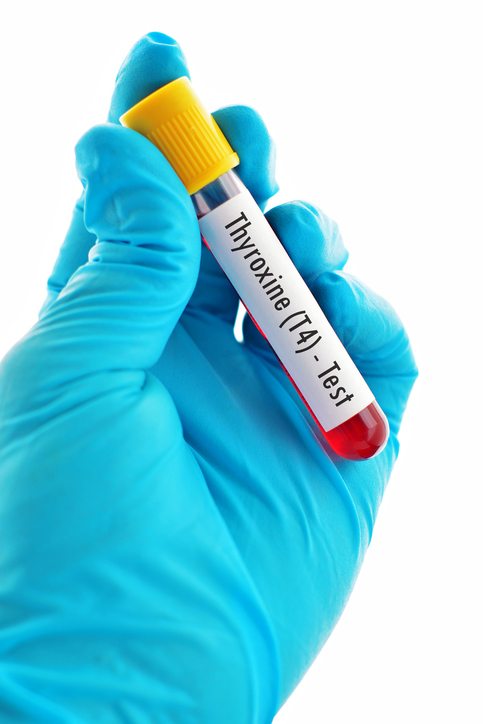
T4 and T3 can be measured by blood test.
Specifically, Total T4 and T3 and/or Free T4 and T3 can be tested.
Total T4 and T3 refers to the total amount of circulating T4 and T3 in your blood. However this includes hormone that is bound to protein, which makes it inactive.
Therefore the more useful reading is a measurement called Free T4 and Free T3, or FT4 and FT3. This measures the amount of active hormone in the blood.
The normal range for T4 and T3 will vary depending on the lab analyzing the sample. Test results need to be compared to the reference range of that specific lab.
Normal ranges for adults generally fall between these values (4).
Total T4 5.0-12 μg/dL
Total T3 80-190 ng/dL
Free T4 1.0-3.0 ng/dL
Free T3 0.25-0.65 ng/dL
There are also specific reference values for children.
Normal T4 and T3 Levels in Pregnancy
Monitoring T4 and T3 levels in pregnant women is more complex.
Thyroid hormones are vital to the growth and development of a fetus. This means the production of T4 and T3 in pregnant women increases by up to 50% (5).
Determining adequate levels can be difficult as reference values for T4 and T3 can vary widely. This results from a number of factors including geographical location and stage of pregnancy.
Recent studies suggest more research is needed to determine more specific cutoff points (6).
Summary: T4 and T3 levels can be determined by blood tests. Normal reference ranges depend on age and tend to vary between labs. Requirements during pregnancy change as well.
Low T4 and T3 levels and What This Means

Low levels of T4 (with high TSH) indicates hypothyroidism.
This occurs when the thyroid is underactive and does not produce enough T4.
This can happen for two different reasons, which have classifications:
Primary Hypothyroidism
This means there is an issue with the thyroid gland itself. It’s the most common type of hypothyroidism.
TSH levels increase as the body tries to increase production of T4 and T3. However, T4 levels remain low because the thyroid gland is not functioning properly.
Primary hypothyroidism is typically diagnosed when we see:
FT4 Low
Total or FT3 Normal or Low
TSH High
Secondary Hypothyroid
This is rare and occurs when the pituitary (or hypothalamus) malfunctions and not enough TSH is secreted.
In this case, the thyroid gland is functioning properly but does not receive enough TSH to signal the production of T4 and T3.
Secondary hypothyroidism is typically diagnosed when we see (3):
FT4 Low
Total or FT3 Normal or Low
TSH Normal or Low
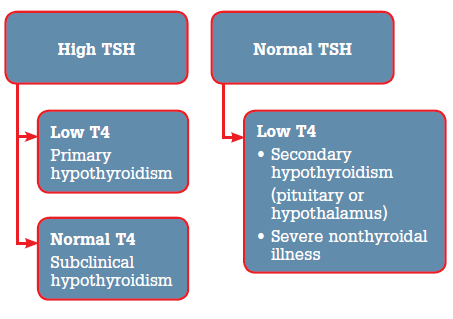
Interpreting test results with low T4 levels. Image source.
During a case of hypothyroidism, T3 is often last to become depleted. This could delay the time it takes to make the diagnosis, which is why T3 levels are not always useful (4).
Best Diet for Hypothyroidism
There are foods to eat and foods to avoid which will improve symptoms of hypothyroidism. If you want a set diet/meal plan to follow – including the shopping list – then please see my 14-Day Meal Plan for Hypothyroidism and Weight Loss.
Alternatively, you can download the meal plan from here and then save it to your phone or print it out:
Summary: Low T4 and T3 levels alongside elevated TSH can indicate hypothyroidism. This is almost always caused by a malfunctioning thyroid gland.
High T4 and T3 Levels and What This Means
High circulating levels of T4 typically indicate hyperthyroidism.
This is also known as Graves’ disease.
It occurs when the thyroid gland becomes overactive and produces excess T4.
Elevated T3 levels can also help determine the severity of hyperthyroidism, as it indicates large amounts of T4 are being converted.
Hyperthyroidism is usually diagnosed when we see:
T4 High
Total or FT3 High
TSH Low
Summary: High T4 and T3 levels usually indicate hyperthyroidism in the context of low TSH.
Do T4 and T3 Levels Need to Be Viewed Alongside TSH Levels?

TSH is regarded as the best marker of thyroid health, while T4 or T3 levels alone are generally not much help (4, 7).
However, to obtain a true understanding of thyroid function, TSH, T4 and T3 should be analyzed together. This is due to the strong relationship between all three hormones.
Unfortunately, many practitioners are only looking at TSH, which likely leads to misdiagnosis or under-diagnosis in many cases.
Other thyroid function tests may also be required (see below).
Summary: TSH, T4 and T3 levels should to be analyzed together to properly diagnose thyroid disease.
Can T4 and T3 Be Normal When TSH Is Elevated?
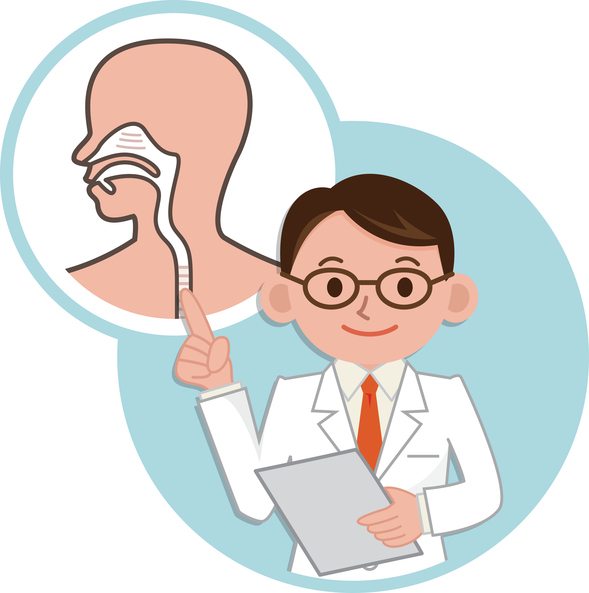
The simple answer is yes.
This is known as subclinical hypothyroidism.
Currently there is no scientific consensus (agreement) on whether treatment with medication is helpful. This is because the active hormones (T4 and T3) are still at normal levels.
Although TSH is elevated, the thyroid is still able to produce enough T4 and T3 to meet demand. Therefore, hypothyroid symptoms are not present.
Often ‘active surveillance’ is the only management undertaken. This involves careful monitoring of signs and symptoms and repeat blood tests.
If TSH levels are significantly raised (above 10 mU/L) medication may be prescribed (8, 9).
Summary: Subclinical hypothyroidism occurs when TSH levels are high but T4 and T3 are normal. Usually there are no symptoms.
Low T3 – Is It Relevant?
Low T3 can be seen in a condition called non-thyroidal Illness (or euthyroid sick syndrome).
It can occur during starvation and critical illness and is generally resolved when health is restored (2, 7).
To a lesser degree, it’s suspected it can also occur during any chronic illness.
Currently there is not enough evidence that replacing T3 on its own is beneficial (2, 10).
Summary: In certain conditions low T3 levels can be seen when TSH and T4 levels are normal. This is usually a result of illness or starvation.
Treating Hypothyroidism With Replacement T4 and T3
Hypothyroidism is usually treated with synthetic T4 called levothyroxine or synthroid.
Desiccated thyroid can also be used effectively, which is a mix of T4 and T3 made from animal thyroid glands. However, there is no evidence desiccated thyroid is more beneficial than levothyroxine (7, 11).
Some doctors may also prescribe T3 alongside T4 medications when treating a stubborn case of hypothyroidism. This is uncommon but often useful.
Summary: Synthetic T4 is the usual treatment for hypothyroidism. Desiccated animal thyroid is an effective alternative.
Tests For Measuring T4 and T3
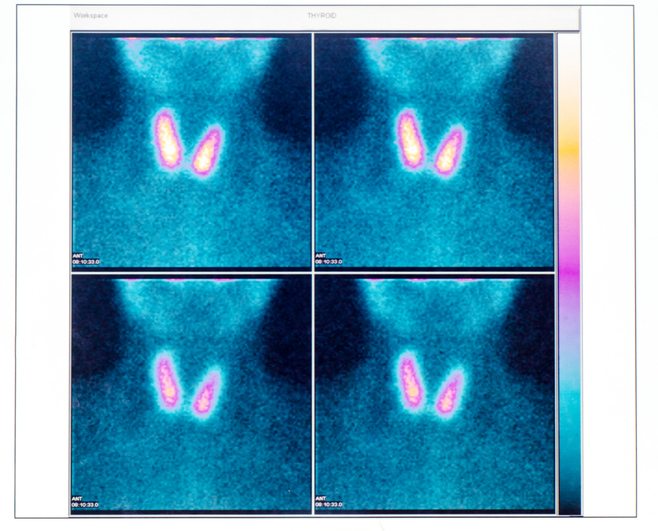
There are a number of tests available that record T4 and T3 levels.
In addition to total T4 and T3, and Free T4 and T3, further tests may be required when the cause of issue is complex.
These include:
Thyroglobulin and thyroid antibody tests are also frequently used to help diagnose thyroid disease.
